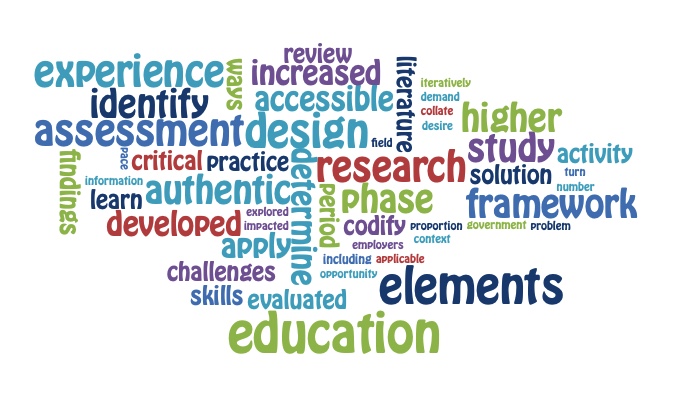Kevin Ashford-Rowe
A heuristic framework for the determination of the critical elements in authentic assessment
THESIS DOWNLOAD:
Abstract
Higher Education is currently undergoing a period of significant challenge and transformation. It is likely that these challenges will, in a comparatively short period of time, lead to changes in the ways in which the higher education experience is both mediated and accessed. These changes have arisen as a result of a number of factors, including the information revolution, and the consequent pace of technological innovation, the increased demand from both employers and government for a more highly skilled workforce and the desire to increase and make more accessible the higher education experience to an increasing proportion of the overall population. All of this has impacted upon the ways in which the higher education experience is represented, and in turn, by which students gain access to the knowledge and skills that will underpin their ability to both learn and perform.
It is against this background that this study was developed with the purpose of identifying from the literature, and then to codify into an applicable framework, the critical elements that would determine an assessment as being authentic. The study took as its starting point the importance, in the current educational context, of being able to determine the elements that define an educational experience as being an authentic one.
The research commenced with a review of the literature to identify and collate those elements that had been identified in previous research in the field. Next these elements, once refined iteratively in practice, were developed into a framework to support the design of a more authentic assessment experience. This framework was then applied in practice and the student’s response to the learning and assessment designed according to these elements was evaluated, and the elements were further reviewed and revised upon the basis of this data. Thus the study was conducted in four phases. In the first phase, the researcher explored the problem; in the second, the researcher sought the development of a solution; in the third phase, this solution was implemented and evaluated; and the findings were presented in the final phase.
The findings of this study suggest that not only is it possible to codify those elements critical to the determination of authenticity into such a framework, but moreover, it is possible to systematically apply them in the design of assessment activity. Thus the implication of this research for educators and educational designers who seek to meet a requirement for workplace relevance in the design of their education and assessment activities is that they will have a better opportunity to both identify and then apply specific design principles that will assist them in the better development of assessment outcomes with a clearer workplace applicability

Publications
Ashford-Rowe, K., Herrington, J., & Brown, C. (2013). Establishing the critical elements that determine authentic assessment. Assessment & Evaluation in Higher Education, 39(2), pp205-222.,